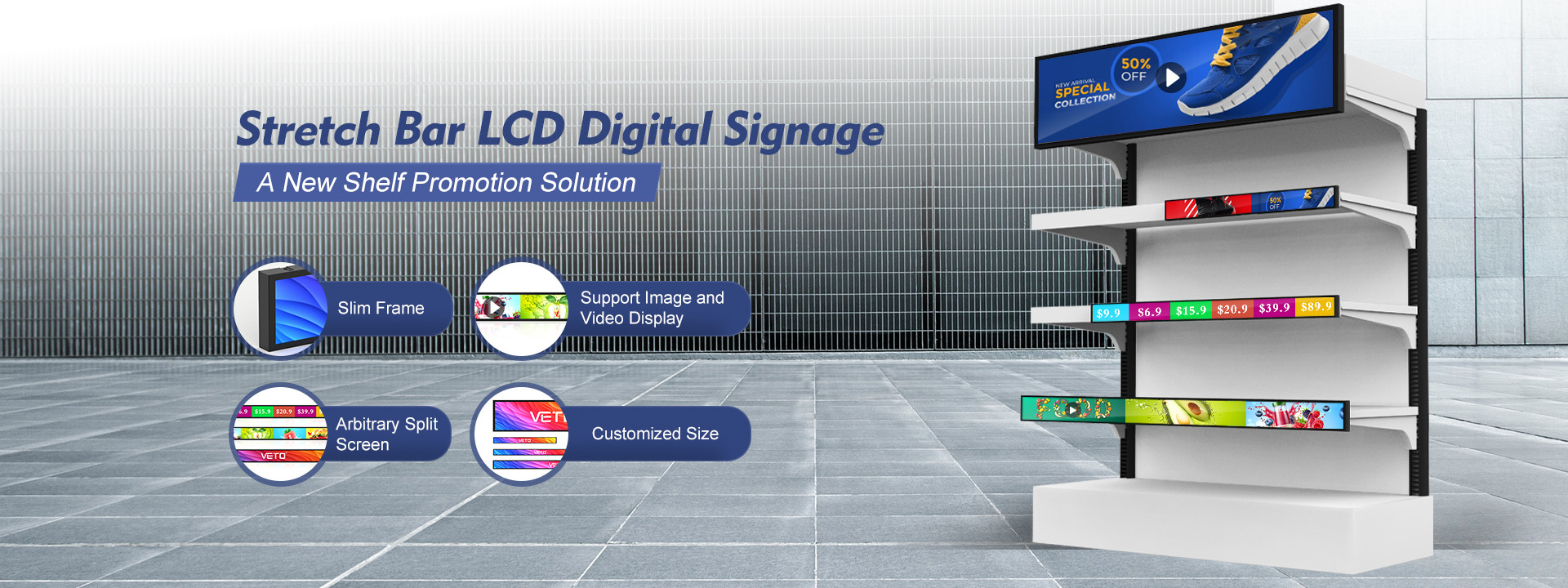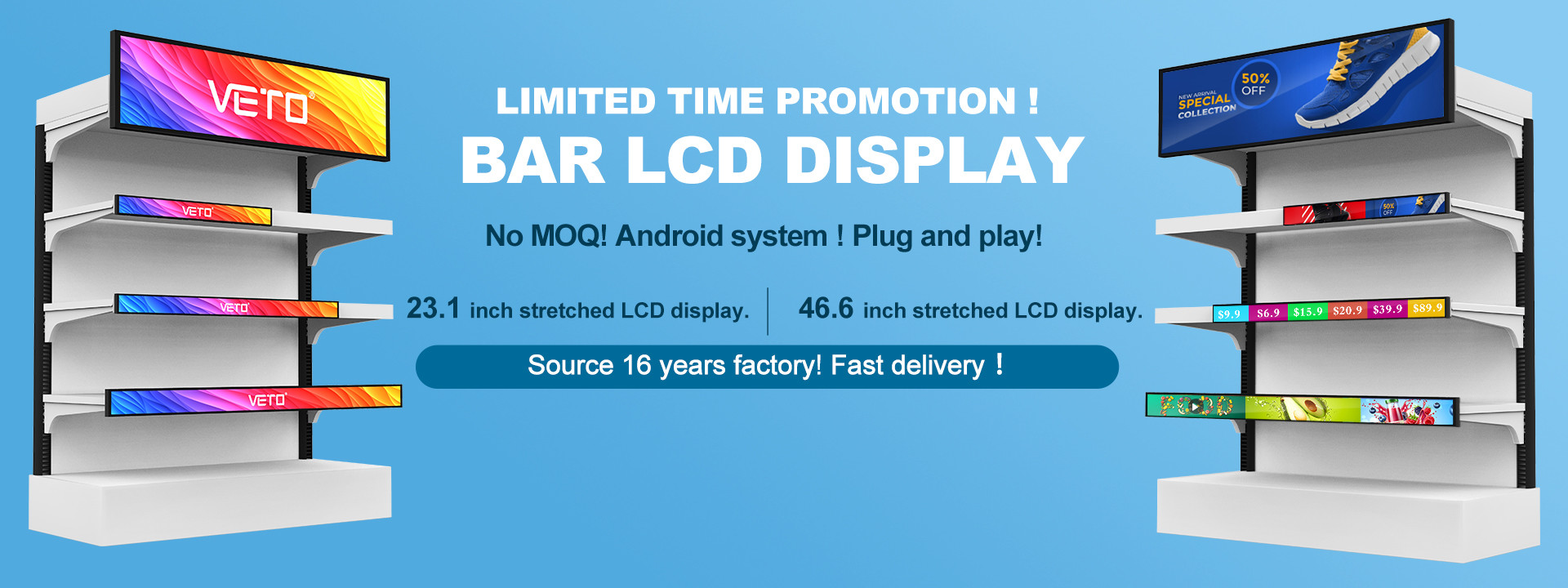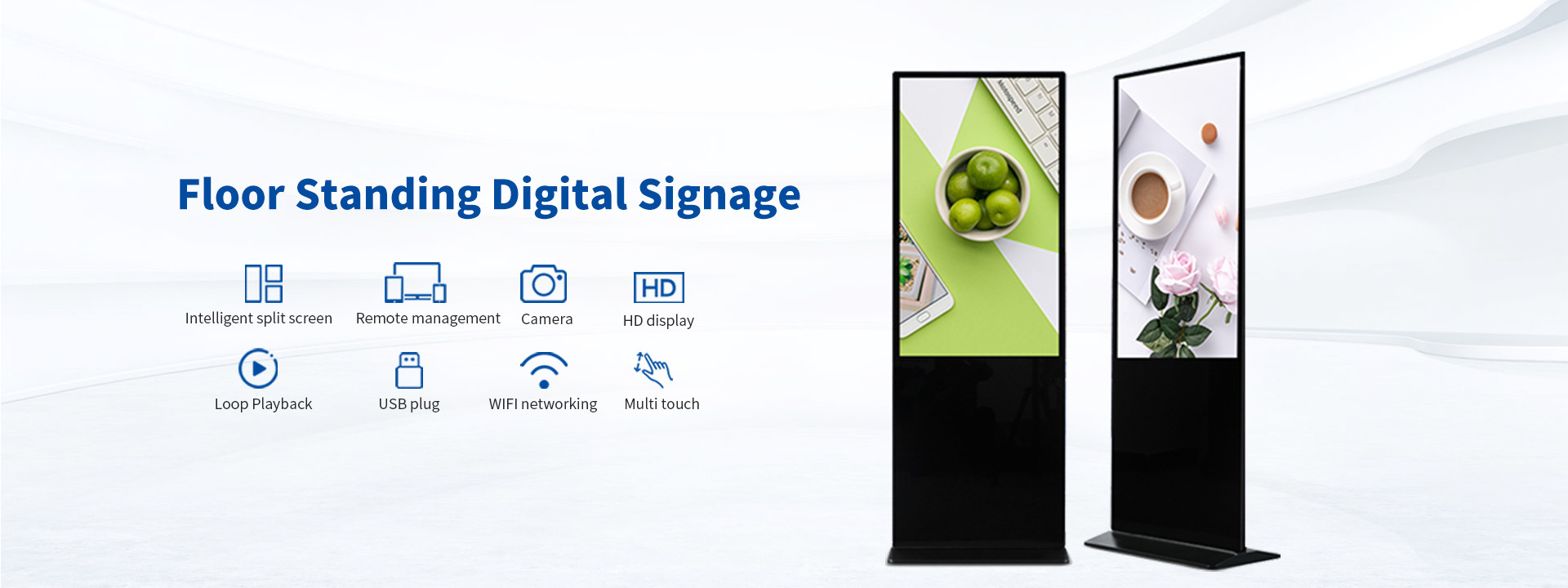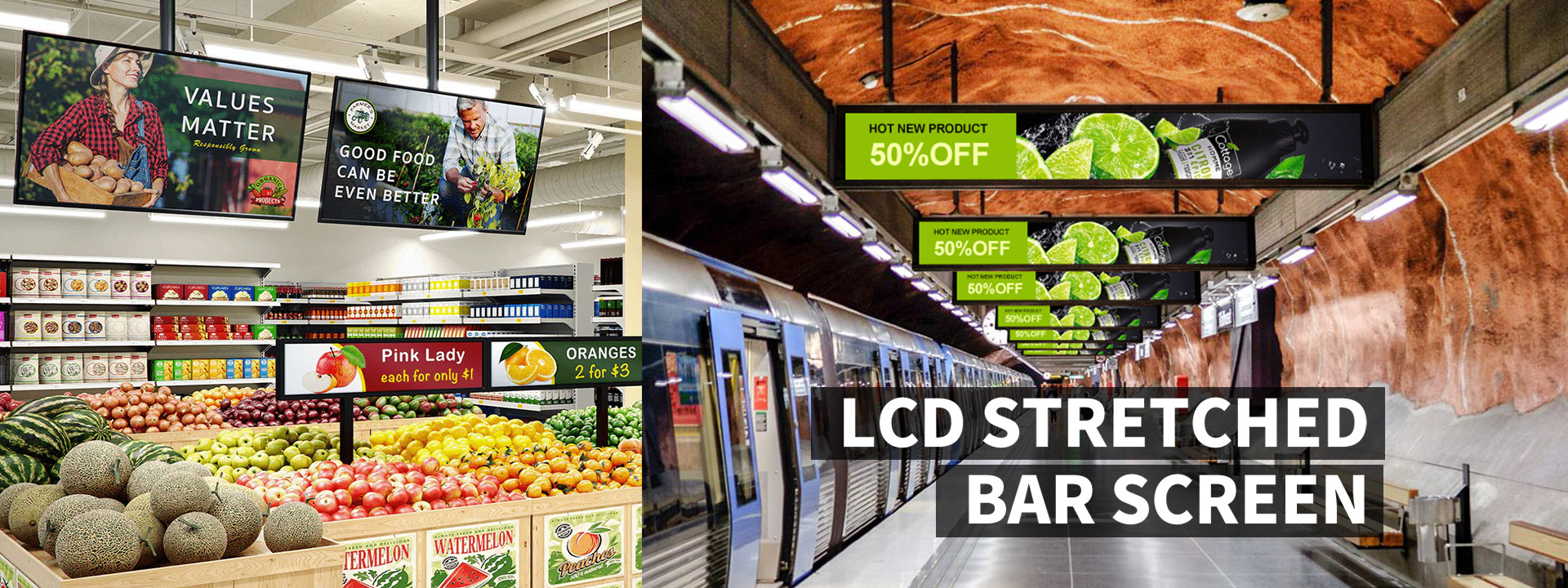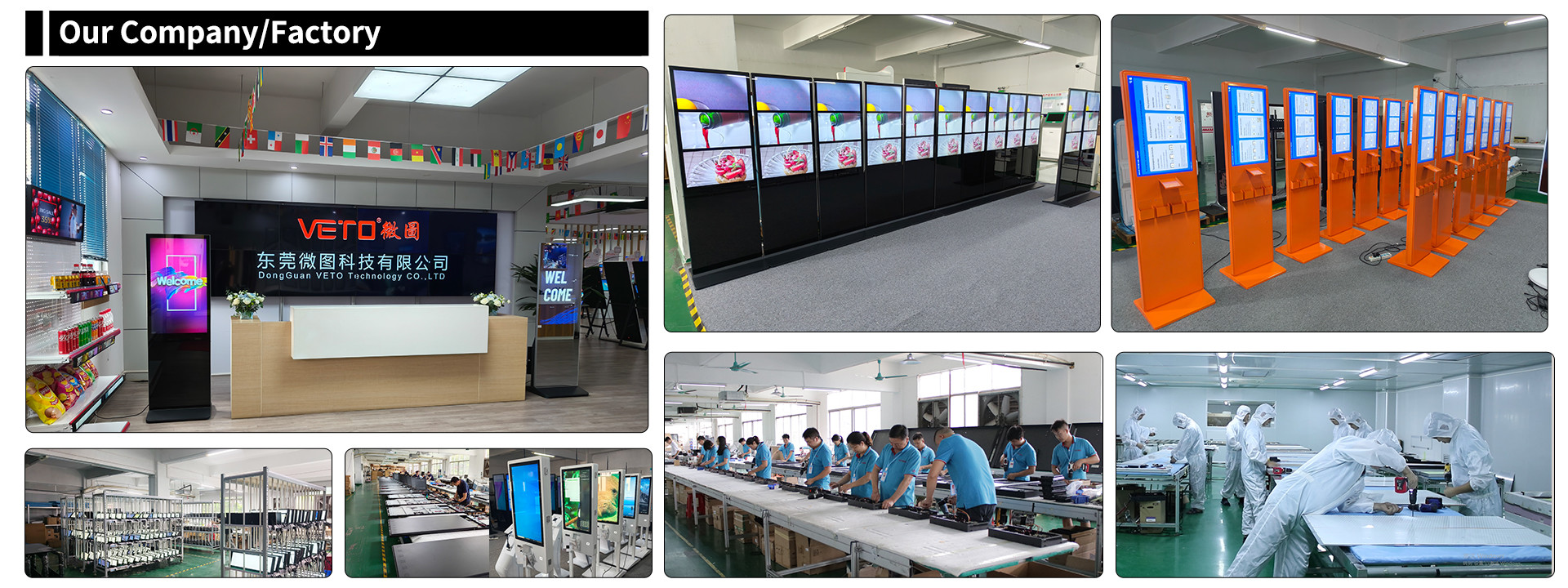Future Trends in Rotatable Digital Signage: Smart Integration, AI, and Enhanced User Engagement
2025-10-24
.gtr-container-a1b2c3d4 {
font-family: Verdana, Helvetica, "Times New Roman", Arial, sans-serif;
color: #333;
padding: 15px;
line-height: 1.6;
max-width: 100%;
box-sizing: border-box;
}
.gtr-container-a1b2c3d4 p {
font-size: 14px;
margin-bottom: 1em;
text-align: left !important;
line-height: 1.6;
word-break: normal;
overflow-wrap: normal;
}
@media (min-width: 768px) {
.gtr-container-a1b2c3d4 {
padding: 25px 40px;
max-width: 800px;
margin: 0 auto;
}
}
The future of rotatable digital signage lies in smart integration, artificial intelligence, and enhanced user engagement. Emerging technologies are transforming traditional signage into interactive and intelligent communication platforms.
Integration with IoT and cloud platforms allows remote monitoring, data-driven content management, and adaptive scheduling. This ensures that signage responds to changing conditions and audience behavior in real-time, enhancing relevance and effectiveness.
AI-powered analytics can optimize rotation schedules, predict viewer engagement, and personalize content. For example, facial recognition or sensor-based triggers can adjust displayed messages according to viewer demographics or foot traffic patterns.
Enhanced interactivity, including touch, gesture, or mobile integration, transforms signage into a dynamic communication tool. These features increase audience participation, reinforce branding, and provide measurable engagement metrics for businesses.
In conclusion, the next generation of rotatable digital signage combines smart technology, AI analytics, and interactive features to deliver highly engaging, personalized, and efficient displays. Businesses can maximize impact while adapting to evolving audience needs and technological advancements.
View More
Security and Durability Considerations for Rotatable Digital Signage
2025-10-24
/* Root container for encapsulation */
.gtr-container-f7h2k9 {
font-family: Verdana, Helvetica, "Times New Roman", Arial, sans-serif;
color: #333; /* Dark grey for text */
line-height: 1.6;
padding: 20px;
max-width: 100%;
box-sizing: border-box;
}
/* Paragraph styling */
.gtr-container-f7h2k9 p {
font-size: 14px;
margin-bottom: 1em;
text-align: left !important;
word-break: normal;
overflow-wrap: normal;
}
/* Styling for the conclusion paragraph */
.gtr-container-f7h2k9 .gtr-conclusion-f7h2k9 {
font-weight: bold;
color: #0056b3;
margin-top: 2em;
}
/* Responsive adjustments for PC screens */
@media (min-width: 768px) {
.gtr-container-f7h2k9 {
padding: 30px 50px;
max-width: 800px;
margin: 0 auto;
}
}
Security and durability are critical for rotatable digital signage, especially in public or high-traffic areas. Protecting the hardware and ensuring long-term reliability enhances performance and reduces maintenance costs.
Physical security measures include tamper-proof enclosures, reinforced mounts, and protective screens. These prevent damage from vandalism, accidents, or environmental factors such as dust and moisture. Lockable access panels secure internal components and prevent unauthorized adjustments.
Durability of mechanical parts is important for consistent rotation. High-quality motors, gears, and bearings should be used, and periodic inspection ensures smooth operation. Weatherproofing may be necessary for outdoor installations to protect against rain, temperature changes, and UV exposure.
Cybersecurity is relevant for network-connected signage. Encryption, secure authentication, and regular firmware updates prevent unauthorized access, data breaches, or remote manipulation of content and rotation.
In conclusion, ensuring both physical and digital security, combined with durable mechanical design, guarantees reliable and safe operation of rotatable digital signage in any environment. Proper precautions protect investment and maintain system performance.
View More
Content Management Strategies for Rotatable Digital Signage
2025-10-24
.gtr-container-dsg123 {
font-family: Verdana, Helvetica, "Times New Roman", Arial, sans-serif;
color: #333;
padding: 15px;
line-height: 1.6;
font-size: 14px;
box-sizing: border-box;
max-width: 100%;
}
.gtr-container-dsg123 p {
font-size: 14px;
margin-bottom: 1em;
text-align: left !important;
line-height: 1.6;
color: #333;
word-break: normal;
overflow-wrap: normal;
}
@media (min-width: 768px) {
.gtr-container-dsg123 {
max-width: 800px;
margin: 20px auto;
padding: 25px;
}
}
Effective content management is essential for maximizing the impact of rotatable digital signage. The ability to display multiple messages requires careful scheduling, prioritization, and design considerations.
Content should be visually clear, concise, and optimized for the display format. High-resolution images, readable fonts, and contrasting colors ensure messages are legible during rotation. Dynamic content should consider rotation speed to allow sufficient viewing time.
Scheduling software allows for segmentation of content by time, location, or audience. For instance, retail signage can rotate product promotions throughout the day, while transportation hubs can display arrivals, departures, and alerts in sequence. Remote updates enable timely adjustments without on-site intervention.
Interactive and data-driven content enhances engagement. Sensors or cameras can trigger rotation based on viewer presence, while real-time data feeds can display relevant information such as weather, traffic, or promotional offers. Analytics from the signage system can guide content optimization.
In conclusion, well-managed content maximizes the effectiveness of rotatable digital signage. Clear visuals, strategic scheduling, and intelligent data integration ensure that messages reach the intended audience efficiently and memorably.
View More
Power Efficiency and Energy Management in Rotatable Digital Signage Systems
2025-10-24
.gtr-container-d4e7f0 {
box-sizing: border-box;
font-family: Verdana, Helvetica, "Times New Roman", Arial, sans-serif;
color: #333;
padding: 16px;
max-width: 100%;
overflow-x: hidden;
}
.gtr-container-d4e7f0 p {
font-size: 14px;
line-height: 1.6;
margin-bottom: 1em;
text-align: left !important;
word-break: normal;
overflow-wrap: normal;
}
.gtr-container-d4e7f0 .gtr-conclusion-d4e7f0 {
font-weight: bold;
font-size: 16px;
margin-top: 1.5em;
}
@media (min-width: 768px) {
.gtr-container-d4e7f0 {
padding: 24px;
max-width: 800px;
margin: 0 auto;
}
.gtr-container-d4e7f0 p {
margin-bottom: 1.2em;
}
}
Energy efficiency is an important consideration in rotatable digital signage systems. Combining display technology with mechanical rotation increases power demands, making energy management critical for cost-effective operation.
Modern rotatable displays often use LED or LCD panels with low power consumption. High-efficiency backlighting, adaptive brightness, and motion-triggered activation further reduce energy use while maintaining image quality.
The rotation mechanism can be optimized for power efficiency. Variable-speed motors, intelligent rotation schedules, and partial rotation cycles ensure that the system operates only when necessary, conserving energy while maintaining visibility.
Remote management and scheduling software play a role in energy optimization. Administrators can control operating hours, adjust brightness according to ambient light, and schedule content updates to minimize unnecessary energy expenditure.
In conclusion, proper energy management in rotatable digital signage ensures reduced operational costs, extended component lifespan, and environmentally friendly operation. Integrating low-power displays, optimized motors, and smart software maximizes efficiency while delivering dynamic content.
View More
Installation and Maintenance Tips for Rotatable Digital Signage
2025-10-24
.gtr-container-f8j0k1 {
font-family: Verdana, Helvetica, "Times New Roman", Arial, sans-serif;
color: #333;
line-height: 1.6;
padding: 15px;
max-width: 100%;
box-sizing: border-box;
}
.gtr-container-f8j0k1 p {
font-size: 14px;
text-align: left !important;
margin-bottom: 1em;
word-break: normal;
overflow-wrap: break-word;
}
@media (min-width: 768px) {
.gtr-container-f8j0k1 {
max-width: 800px;
margin: 0 auto;
padding: 20px;
}
}
Proper installation and maintenance are critical to ensure optimal performance and longevity of rotatable digital signage. These signs combine display technology with mechanical rotation, requiring careful handling and setup.
Choosing the right location is essential. The display should be visible from multiple angles, have sufficient clearance for rotation, and be free from obstructions. Height and distance from viewers should be considered to ensure readability and effectiveness.
The mounting system must be secure and aligned properly. Motorized rotation mechanisms require precision installation to prevent wobbling or misalignment. Many systems offer adjustable brackets and leveling tools to simplify this process.
Routine maintenance is necessary to preserve functionality. Mechanical components, such as motors and gears, should be lubricated periodically, while screens and protective covers should be cleaned to maintain clarity. Software updates ensure content scheduling, rotation timing, and remote management operate smoothly.
In conclusion, careful installation, proper alignment, and regular maintenance ensure that rotatable digital signage performs efficiently and reliably. Following best practices maximizes visual impact, reduces downtime, and extends the lifespan of the equipment.
View More



